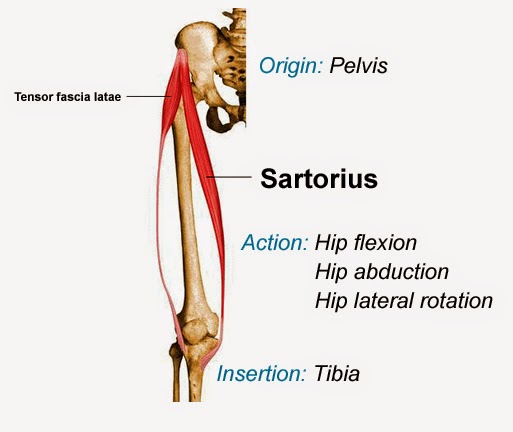What movements does the sartorius muscle control in ballet?
 For starters, the sartorial muscle is responsible for aiding in any movements that include raising the leg at the thigh, twisting the knees away from your body, moving the thigh away from the body, or bending the knee.
For starters, the sartorial muscle is responsible for aiding in any movements that include raising the leg at the thigh, twisting the knees away from your body, moving the thigh away from the body, or bending the knee.
How do sartorius muscle injuries occur in ballet?
These injuries mostly occur when the sartorius muscle stretches beyond it’s capacity.
What does a sartorius muscle sprain feel like?
Ouch! That’s what it feels like. When I suffered my injury, it felt like a pop and the muscle was immediately suffering some tightness. About an hour later my leg felt like a dead weight. The Wellness Digest describes the pain as a burning or stinging under the skin that radiates from the outside of the bottom of the hip, all way down the thigh to the inside of the knee. It can also cause hypersensitivity on the inside of the knee. Coming from experience, this isn’t fun. It makes it absolutely painful to walk, move, or even put on pants!
Treating a sartorius muscle sprain from ballet?
Dancers don’t freak out! Parents same goes for you! Although it can be very painful and put ballerinas out of commission for a little while, a sartorius injury is treatable through common methods according to WebMD and several trainers and doctors that I’ve worked with, they recommend the same thing. PRICE – protect the muscle, rest the leg, ice the area, compress the muscle, and keep it elevated to reduce the pain and swelling.
Oftentimes, you’ll see ballerinas try to keep performing even with the injury, but the key is to follow the price protocol. Depending on the level of pain, you may want to use crutches to ensure proper rest. If icing, remember to ice for 20 minutes each hour, but repeat several times per day (keep a cloth between the skin and the ice to prevent frostbite). When compressing do not over tighten the ace bandage or cut off circulation. Remember to always speak to a trainer or medical professional to help gauge the severity.
Preventing Ballet-related sartorius muscle sprains
One of the biggest causes of sartorius injuries is slip-ups in technique. So make sure to practice your technique so much that it becomes second nature. Once your muscles start to tire, you’ll want to make sure that you maintain form to prevent injury.
Treat your muscles with the respect they deserve and start drilling this early. The sooner you make it a habit, the longer your muscles will last you. Warm up properly, stretch, and purchase a foam roller to roll out your sartorius muscle group.
Another way to prevent injury is to frequently change out worn-down equipment. Remember to frequently replace your ribbons, elastic, toe pads, and pointe shoes. Once they get worn down it can be dangerous.
So what did you learn? Whether you’re researching for your own benefit or for your kids that are in ballet, you’ll want to make sure that you do everything you can to prevent these injuries.
